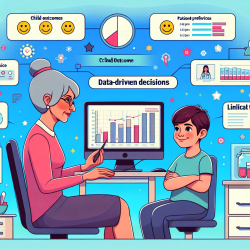Understanding Gender Differences in Online Learning: Key Insights for Practitioners
The COVID-19 pandemic brought about significant changes in educational delivery, with a swift transition to online learning. A recent study titled "Gender Differences of University Students in the Online Teaching Quality and Psychological Profile during the COVID-19 Pandemic" provides valuable insights into how these changes affected students differently based on gender. Understanding these differences is crucial for practitioners who aim to improve educational outcomes and mental health support for students.
Key Findings from the Study
The study analyzed 1,093 university students from Ibero-American countries, focusing on their experiences during different phases of the pandemic: online, hybrid, and face-to-face learning. Here are some key findings:
- During the lockdown phase, students experienced higher stress levels and learning difficulties compared to hybrid and face-to-face phases.
- Females reported higher levels of stress, anxiety, and loneliness during the online phase, whereas males showed higher difficulty in learning during hybrid and face-to-face phases.
- No significant gender differences were found in motivation, class attendance, learning level, grades, or preferred learning method.
Implications for Practitioners
These findings underscore the importance of tailoring educational strategies to address gender-specific challenges in online learning environments. Here are some actionable steps practitioners can take:
- Enhance Emotional Support: Provide targeted mental health support, especially for female students who may experience higher stress and anxiety levels. Consider implementing both active and passive interventions, such as counseling and peer support groups.
- Invest in Digital Skills Training: Ensure that both students and educators are equipped with the necessary digital skills to navigate online learning platforms effectively. This can help reduce learning difficulties and improve engagement.
- Promote Inclusive Learning Environments: Create learning environments that accommodate diverse needs and preferences. This includes offering flexible learning options and ensuring access to necessary digital resources for all students.
Encouraging Further Research
While this study provides valuable insights, further research is needed to explore the long-term impacts of online learning on different genders. Practitioners are encouraged to conduct their own studies or collaborate with researchers to deepen understanding and develop more effective educational strategies.
To read the original research paper, please follow this link: Gender Differences of University Students in the Online Teaching Quality and Psychological Profile during the COVID-19 Pandemic.










